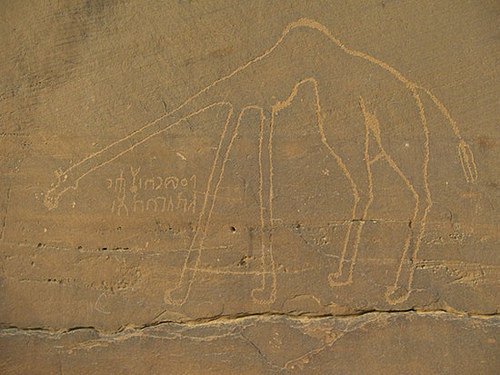
A study of modern and ancient camel DNA finds that the movement of ancient caravan routes may have shaped the genetic diversity of Arabian camels. Despite the widespread use of camels in hot, arid conditions for the past 3,000 years, little is known about their evolutionary history and domestication. To examine the population structures of wild and extinct Arabian camels, Pamela Burger and colleagues examined the genetic diversity of almost 1,100 modern Arabian camels, or dromedaries, from across the species’ range, and analyzed ancient DNA from wild and early-domesticated Arabian camels. The authors found substantial shared genetic variation in modern camel populations, possibly due to the use of camels in long-distance caravan networks. The authors also identified a genetically distinct camel population in Eastern Africa, which may have been relatively isolated due to geographic, physiological, and cultural barriers. Analysis of ancient DNA from up to 7,000-year-old dromedary specimens suggested that domesticated camels originated from wild populations in the Southeast coast of the Arabian Peninsula, consistent with archaeological findings. The study suggests that the wild camels, which are now extinct, periodically helped restock domesticated populations. Unlike many other domesticated animals, modern camel populations have maintained their ancestral genetic diversity, potentially enabling adaptation to future changes in terrain and climate, according to the authors.
_______________________________________
Long-distance and back-and-forth movements in ancient caravan routes shaped the dromedaries’ genetic diversity. Image courtesy of Fasial Almathen
____________________________________________________
Wild extinct dromedaries from the Southeast Arabian Peninsula are among the founders of the domestic dromedary gene pool. Petroglyph from Wadi Rum, Jordan. Image courtesy of Pamela Burger.
________________________________________________
Source: Press release of the Proceedings of the National Academy of Sciences (PNAS)
____________________________________________________
*“Ancient and modern DNA reveal dynamics of domestication and cross-continental dispersal of the dromedary,” by Faisal Almathen et al.
____________________________________________________

______________________________________________
Travel and learn with Far Horizons.
____________________________________________
This richly illustrated issue includes the following stories: Recent findings shedding new light on the whereabouts of the remains of Philip of Macedon, father of Alexander the Great; how an archaeologist-sculptor is bringing bones of the dead back to life; archaeologists uncovering town life at the dawn of civilization; an exclusive interview with internationally acclaimed archaeologist James M. Adovasio about what makes the Meadowcroft Rockshelter prominent in the ongoing search for the first Americans; what archaeologists are finding at the site of the ancient city of Gath, the home town of the biblical Philistine giant, Goliath; and how scientists are redrawing the picture of human evolution in Europe. Find it on Amazon.com.








